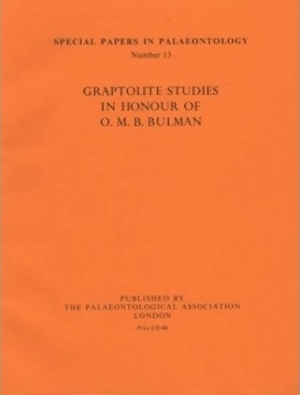Reg. Charity No. 1168330

Available evidence-palaeomagnetic, tectonic, biological, and environmental-convincingly demonstrates that latitudinal variation in surface-water temperature exerted a primary control upon the compositional characteristics and broad distributional patterns portrayed by Ordovician epipelagic graptolite faunas. The emergence of latitudinal climatic belts and a consequent steepening of thermal gradients between the Ordovician palaeoequator and the palaeopoles, foreshadowing the late Ordovician continental glaciation, was accompanied by an increased definition of two graptolite provinces. These provinces, one (Pacific) characterized by stenothermal tropical forms and the other (Atlantic or European) by graptolites showing a preference for the cooler waters of the temperate zone, achieved their maximum expression in late early Ordovician (Llanvirn) time.
The reduced expression of provincialism in the late Ordovician reflects a reduction in the over-all areal distribution of graptolite faunas with the onset of glaciation. Late Ordovician graptolite faunas were confined to the tropical zone, where the general environmental uniformity (measured in terms of surface-water temperatures) increased the possibility of interchange and hence favoured the establishment of more uniform compositional characteristics.
Local compositional characteristics and distribution patterns may reflect the operation of secondary controls, such as ocean currents, geographical and genetic isolation, and physical barriers.